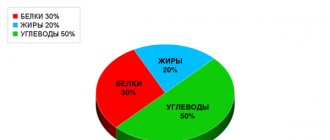Why do you need to know your BMI?
Data from the World Health Organization indicate that obesity is currently one of the leading diseases in the world. Doctors successfully fight various kinds of pathologies, infections, and diseases. But the fight against excess weight has not yet shown good results. This is due to an incorrect lifestyle, an abundance of fast food, fatty foods. The consequences of obesity and excess weight are terrifying - type 2 diabetes, a tendency to heart attacks, disruption of the functioning of internal organs.
Body mass index may indicate problems occurring in the body:
- an increased value indicates the risk of serious diseases associated with excess weight: hypertension, diabetes, varicose veins, problems of the cardiovascular, digestive systems, internal organs;
- a reduced value is a signal of exhaustion, possible deficiencies of vitamins, minerals, and nutrients. A weakened body is less resistant to external influences. There is a decrease in local immunity and protective reactions. A lack of fat mass and a low BMI may indicate type 1 diabetes, osteoporosis, digestive disorders, mental problems, and eating disorders.
Child height and weight calculator
All parents should have an idea of how well their baby is developing. Does the child keep up with the norms for weight and height or overtake them? To determine this, we suggest you use our height and weight calculator
. It gives a full assessment of these indicators, taking into account age, (with an accuracy of one day), and also calculates the BMI indicator (body mass index).
All values, methods and recommendations are taken from the materials of the WHO (World Health Organization), which conducted a large-scale study on the development of children of various ages, nationalities and countries.
Children's scales, medical Tanita BD-815MA
(2 reviews)
38,000 rub.
Children's scales, medical Tanita BD-585
(1 reviews)
8,600 rub.
Children's medical scales Tanita BD-590
(1 reviews)
4,600 rub.
Children's medical scales Tanita 1583
(2 reviews)
9,000 rub.
Children's medical scales Tanita 1584
(7 reviews)
RUB 7,800
View all products in the category: Baby scales for newborns (up to 20 kg)
Height (body length)
Body length is usually measured in children under two years of age. After two years, height is measured in a standing position accordingly. There may be a difference of 1 cm between height and weight, which may affect the evaluation result. In this case, if the height is indicated for a child under two years old, for the accuracy of the calculation it is converted into length by the calculator and vice versa.
Height is one of the most important indicators for assessing a child’s development. It is recommended to measure it every month. (See growth centile tables for more details).
Ratings of “short” and “very short” may indicate a developmental delay or that the child was born premature.
A “very high” rating, in turn, may also indicate the presence of an endocrine disorder. However, if at least one of the parents is tall, most likely such height is the norm in this particular case, but to be sure, it is still worth consulting a doctor.
Possible growth estimates:
Very short: Significant stunting, which may be accompanied by excess weight. A specialist examination is necessary to determine the cause and eliminate growth retardation. Stunted: Stunted growth also sometimes leads to excess weight. Consultation with a physician is recommended. Below average: The child is short, but his height is within the normal range.. Average: The child is of average height, like most healthy children. Above average: Tall child, height within normal limits. High: This height is rare, is mainly hereditary and cannot indicate the presence of any abnormalities. Very tall: This height can be either normal if you have tall parents, or a sign of an endocrine disease. We recommend consulting with specialists. Height does not correspond to age: Height does not correspond to age - there may be an error when entering indicators. Please check the data and use the calculator again. If the data is correct, this is a clear deviation from the norm. A detailed examination by a specialist is necessary.
Child's weight
Weight itself, without taking into account height and other data, does not provide a deep assessment of the child’s development.
However, the “Low weight” and “Extremely high weight” ratings are sufficient for consultation with a doctor (see weight centile tables for more details). Possible weight estimates:
Severe underweight, extremely low weight: There is a high probability that the child is suffering from malnutrition. Immediate examination by a doctor is necessary. Underweight, low weight: The child’s body is probably exhausted, a specialist examination is necessary. Less than average: Weight is in the lower limits of the normal weight for the specified age. Average: The child is of average weight, the same as most healthy children. Greater than Average: When receiving this rating, weight should be estimated based on BMI (body mass index). Very large: When obtaining this estimate, weight should be estimated based on BMI (body mass index). Weight does not correspond to age: There may have been an error when entering data. If all the data is true, most likely the child has problems with height or weight development (see height and BMI estimates). We definitely recommend consulting with an experienced doctor.
Body mass index
To assess the harmonious development of a child, it is customary to look at the ratio of height and weight - Body Mass Index (BMI). This indicator allows you to most accurately determine deviations in the child’s weight, or, conversely, shows that the child’s weight in relation to height for his age is normal.
It should be understood that this BMI indicator is different for each child’s age and even more so differs from the indicators of an adult, so this calculator necessarily takes into account both the height and age of the child for the correct calculation (see BMI centile tables)
Body mass index estimates:
Severe underweight: Severe wasting of the body. Nutritional correction is necessary as prescribed by a doctor. Underweight: Exhaustion. Nutritional correction is necessary as prescribed by a doctor. Low weight: Lower limit of normal. The child weighs less than most of his peers. Normal: Optimal ratio of height and weight. Increased weight: Upper limit of normal. The child weighs slightly more than most of his age. In the future, there is a risk of gaining excess weight. Overweight: The child is overweight. It is recommended to adjust your diet as prescribed by your doctor. Obesity: It is necessary to adjust the diet as prescribed by the doctor and increase the child’s physical activity. Cannot be assessed: Your BMI readings are much higher than normal; you may have made a mistake when indicating your height and weight. If the data is correct, then the child is likely to be severely obese and the help of an experienced doctor is needed. Go to the section: scales for newborns
How to calculate body mass index for women
BMI is usually calculated using Adolphe Quetelet’s formula. It was developed in the middle of the last century and takes into account only a person’s height and weight. In this case, age and other individual characteristics, such as waist or hip circumference, are not taken into account. To correctly interpret the obtained value, weight loss specialists resort to additional research: it is necessary to identify the true reasons for gaining extra pounds in order to draw up a plan for getting rid of them.
Once your BMI is determined, if it is higher than normal for your height, weight and age, it is recommended that you undergo a comprehensive examination at a weight loss clinic. It is important to determine the percentage of fat and muscle tissue. Such a serious and thorough approach to the problem may be life-saving. Why? Because fat deposits are usually concentrated in certain areas: on the stomach, thighs, and around the internal organs. Certain combinations, sizes and proportions of these deposits, which are detected during examination at a weight loss clinic, may indicate dangerous diseases. And the simple generally accepted BMI formula, of course, does not take into account all the details of the location of extra pounds.
Your ideal weight
A woman's weight is considered ideal if:
- does not cause discomfort;
- does not limit a woman when performing everyday activities;
- does not cause health problems;
- does not carry potential risks: the likelihood of developing type 2 diabetes, high blood pressure, high cholesterol, heart disease.
There are various ways to determine your ideal weight. The most common are the following:
- By body mass index. If it is normal and there are no concomitant diseases, there is no need to worry.
- Subtract 110 from your height in centimeters.
- Along the fat fold on the abdomen. The norm for women is 2-4 cm.
- Use an online calculator.
The best way to determine the value of your body mass index is to undergo a comprehensive examination using special equipment. It is available in weight loss clinics. Experts will determine the ratio of fat and muscle mass, ideal weight, indicators necessary to determine the state of health and create a diet.
Explanation, ideal body mass index
After inserting your own anthropometric parameters and the correction factor into the selected formula, you need to make simple mathematical calculations. The resulting numerical value will be the individual body mass index.
The result is interpreted according to a special table approved by WHO. The ideal indicator is the range of 18.5-24.9. A result of 16 or less indicates a severe weight deficit. Lack of mass is in the range of 16-18.5.
Body Mass Index Table
Excess weight is recorded at a result of 25-30. Obesity ranges from 30-35. If the result is over 40, the condition should be considered severe and critical.
The estimate is approximate and indirect. It may differ from the doctor's opinion. There are additional factors that are difficult to account for in existing formulas.
If you deviate from the optimal value, you should consult an endocrinologist, gastroenterologist or general practitioner for advice. Taking into account the difference in muscle mass, the ideal indicator for women is 20-22, for men - 23-25.
BMI 18 or less
This value may pose a significant health hazard . In some cases, a BMI below 18 indicates a degenerative state of tissues and nutrient deficiency.
It is necessary to balance the diet and take vitamin and mineral complexes. To develop a nutrition system, you should contact a nutritionist. This value may be caused by a pathological process in the body. It is recommended to undergo a full medical examination.
BMI 25 or more
This figure is considered overestimated. It is average in nature and does not reflect individual characteristics of physical development. It should not be given any importance to athletes and teenagers.
You should only worry if anthropometric deviations are visually noticeable and negatively affect your health. It is necessary to consult a doctor to choose a diet or therapeutic tactics.
It is recommended to undergo a comprehensive examination to exclude pathological factors of excess weight. In most cases, to normalize the BMI, it is enough to do exercises in the morning, reduce the consumption of fatty foods and starchy foods.
Body Mass Index Formula
There is a generally accepted formula by A. Quetelet that allows you to calculate BMI. It has the form: I=m/h², where m is body weight (kg), h is height (m).
Calculating your body mass index will not take much time. The main thing is to correctly interpret the resulting value. The World Health Organization proposes the following classification based on the data obtained:
| Index value | What does the indicator say? |
| Less than 16 | There is a pronounced lack of body weight, exhaustion of the body |
| From 16 to 19 | Body weight is insufficient, there is a deficiency |
| From 19 to 25 | Weight is within normal limits |
| From 25 to 30 | There is excess weight, the stage of pre-obesity is observed |
| From 30 to 35 | Obesity type 1 |
| From 35 to 40 | Obesity type 2 |
| Over 40 | Obesity type 3 |
It is better to calculate your body mass index based on your age. The norm for age intervals for women is different, shown in the following table:
| Age | Body mass index for women by age |
| 19-25 | 19,6 |
| 25-35 | 23,3 |
| 35-45 | 23,5 |
| 45-55 | 25,3 |
| Over 55 | 27,4 |
If a woman’s body mass index shows significant excess weight or even some stage of obesity, a weight loss specialist prescribes additional tests and refers her to a psychotherapist for consultation. After all, it is important to establish the true reasons for weight gain or loss. Perhaps then it will be necessary to teach the patient to independently deal with problems leading to deviations and illnesses, and to begin to live in a completely new way. It’s not for nothing that professionals say that improving your psycho-emotional background and changing your eating habits is the key to a new, healthy body. And these are not just beautiful words, but everyday reality.
Body mass index
In order to monitor your health, it is important not only to know how much you should weigh normally, but also to understand what the combination of fat and muscle mass is in the body. An informative indicator is the body mass index, which reflects the level of physical fitness and health of a person. It is often used to assess not only the degree of obesity, but also wasting. It helps diagnose such a common disease as anorexia.
Body mass index is calculated using the formula proposed by Adolphe Quetelet. It takes into account the ratio of height and weight, but is not adjusted according to age or body size. To clarify the results, specialists prescribe a set of additional studies and analyses. To adjust your volumes, you need to know the causes of obesity or underweight.
To find out what the optimal weight of a person is, use the formula I=m/h². How much you weigh (m) is measured in kilograms, and your height (h) is measured in meters. The World Health Organization conducted research based on which it proposed a basic classification of BMI:
for women based on age:
- 19-25 years old - 19.6;
- 25-35 years old - 23.3;
- 35-45 years old - 23.5;
- 45-55 years old - 25.3;
- over 55 years old - 27.4.
It should be noted that over the age of 60, many people begin to gradually lose weight. This is due to the condition of the bone skeleton and a decrease in muscle mass.
Online calculator for calculating BMI
An online BMI calculator is the fastest, easiest way to find the true value. There are different sites: some take into account only height and weight, others also age. The second one is more popular, since it allows you to get the most accurate value. For older people, a slight deviation from the optimal BMI value is considered normal.
The BMI calculator works simply. All that is required from a person is:
- indicate gender. Women, for example, tend to have a lower BMI;
- enter height and weight;
- Enter the full number of years or indicate the date of birth.
The BMI calculator will calculate the value in a few seconds and indicate which of the listed intervals it belongs to: deficiency, normal, pre-obese or one of the stages of obesity.
BMI calculator
Enter information about the person for whom you want to find out the body mass index. To do this, fill out the fields below and click the “Calculate” button.
Age must be between 18 and 100!
Height must be a number greater than zero!
The weight must be a number greater than zero!
Calculation formula
In 1869 in Belgium, sociologist and statistician Adolphe Ketele developed a formula that can be used to calculate the body weight index relative to height and determine whether it is normal, underweight or overweight .
The formula for calculating BMI is as follows:
m value corresponds to the body weight measured in kilograms, and the h corresponds to height measured in meters.
The result obtained as a result of the calculation is the human body mass index.
Severe underweight
If the BMI value for women is less than 16, there is only one conclusion - there is a pronounced underweight. This may indicate a number of serious diseases and severe depletion of the body. Only a specialist can make an accurate diagnosis.
There are several main reasons why underweight may occur:
- insufficient food consumption: inability to eat due to work, stress, difficult life situation, conscious refusal to eat;
- diseases of the gastrointestinal tract that interfere with the absorption of vitamins, minerals, and nutrients;
- unhealthy lifestyle: unbalanced, unhealthy diet, bad habits, lack of physical activity;
- hereditary predisposition.
It is important to start treatment on time and contact competent specialists. Usually, a comprehensive methodology is required: changing eating habits, nutrition in combination with the work of a psychologist.
Underweight
Typically, a BMI value below 19 indicates underweight. This is no less a serious problem than obesity, ignoring which can lead to anemia, anorexia - diseases dangerous to the body, accompanied by loss of strength, fainting, migraines, disruption of the cardiovascular and digestive systems, weakening of the immune system and the body's defense reactions.
Insufficient body weight in women may indicate the following diseases:
- neuropsychic exhaustion;
- hormonal disorders;
- overwork;
- infectious and viral diseases;
- problems in the gastrointestinal tract;
- eating disorders.
The problem of underweight should not be ignored, as the disease can take a more serious form that is life-threatening. When gaining weight, an integrated approach is important, a special technique that includes proper rest, proper nutrition, moderate physical activity, and work with a psychologist.
Normal body weight
Normally, BMI should be from 18.5 to 25. If the resulting value is in this range, most likely there are no problems with excess weight. However, consultation with a specialist is necessary, since Quetelet’s formula:
- Does not take into account the location of fat deposits. Athletes who have a high percentage of muscle will score high, close to being pre-obese or obese. Although this is not true.
- Not suitable for pensioners. Excess weight is normal for people over 60. Their norm may be in the range of 22-26.
Weight loss specialists with many years of experience are able to accurately diagnose and identify existing dangers and predispositions. Even slim people are recommended to periodically undergo a comprehensive examination at a weight loss clinic:
- Do a clinical blood test and ESR to determine the condition of the body, check the level of glucose and glycated hemoglobin, which are responsible for the balance of insulin.
- Make a lipid profile that reflects the metabolism of fats in the body. It allows you to track cholesterol levels, exclude obesity and heart disease.
- Find out the ratio of fat and muscle mass, localization of deposits. Visceral fat, concentrated around vital organs, can cause the development of many diseases. A person can be very slim and not even think about such a problem.
The concept of body mass index (BMI)
The value allows you to indirectly assess the physical development of a person for overweight or underweight, which negatively affects the quality of life and often becomes the cause of the development of endocrine disorders, dystrophic conditions and other pathological anomalies.
The original formula was not particularly accurate and was unified.
Therefore, various indices necessary for accounting were later added:
- body type;
- age;
- gender identity;
- the presence of chronic or genetic pathologies that affect a person’s height and weight.
You can calculate BMI (the formula is extremely simple and does not require complex calculations) yourself . The conditional concept is widely used in clinical practice and is often necessary when assessing the effectiveness of a weight loss diet.
It is used in professional sports when analyzing the functional state of athletes, during conscription for military service and in other cases. BMI should be used carefully - solely for an approximate assessment of the physical parameters of the body.
In well-developed athletes, deviations from the generally accepted and WHO-approved norm are easily explained by a large amount of muscle mass or body type. To clarify the functional state of the body, along with BMI, indices of generalized (central) obesity are used.
Excess body weight
Experts distinguish two forms of excess body weight:
- Fat deposits are caused by external influences: lifestyle, eating habits, lack of motor and physical activity, stress. About 70% of people suffer from “obesity from laziness.”
- Fat accumulation occurs as a result of certain diseases, disorders of lipid and metabolic metabolism, and is associated with problems in the functioning of the endocrine system.
Weight gain is caused by an imbalance caused by excess food consumption, insufficient physical activity, and problems with the psycho-emotional state. It turns out that the body receives more energy than it expends.
Obesity
Obesity refers to excess fat deposits located in the subcutaneous layer, organs, and tissues. This is the most dangerous disease for the body, causing self-doubt, problems in intimate life, psycho-emotional discomfort, and disruption of internal organs. The listed problems require solutions, a competent, comprehensive approach. The technique should cover all aspects of weight loss:
- Psychology. Responsible for motivation, forming habits, getting rid of complexes, changing attitudes towards food.
- Proper nutrition, which involves changing eating habits and eating behavior. The patient will not be required to adhere to a strict diet or count calories.
- Rehabilitation. The loss of extra pounds is accompanied by sagging skin, loss of its elasticity and smoothness. How to enter the new form and accept it? Rehabilitation therapy and cosmetology will help.
- Socialization. Losing weight largely depends on the support of family, friends and acquaintances. What if they are indifferent or even against? Competent psychological assistance will help.
This technique has been repeatedly confirmed by the world scientific community and is effectively used in practice.
There are four main types of obesity:
- Excess weight accounts for 29% of body weight. The BMI of such people is in the range of 30-35.
- Excess by 30-40%, index - 35-40.
- Exceeding more than 40%. Body obesity index over 40.
- Weight is twice or more times the ideal weight. This type is considered the most dangerous.
Example of calculating body mass index
The formula from Adolphe Quetelet is not ideal, but is widely used in medical practice. It is easy to calculate your body mass index. Let's consider an example: it is necessary to determine the BMI value for a girl with a height of 168 centimeters and a weight of 65 kg. The algorithm is as follows:
- square the height in meters: 1.68×1.68=2.8;
- divide the mass in kilograms by the resulting value: 65/2.8=23;
- Body mass index is 23. It ranges from 19 to 25. Weight is normal.
Monitoring your BMI readings will help you maintain your weight and health: according to the World Health Organization, excess weight can lead to type 2 diabetes, problems with the cardiovascular system, and hypertension. Do not neglect your own well-being and health. Timely diagnosis in a weight loss clinic under the guidance of competent specialists is the best solution.
Generally accepted formula
Now the BMI formula is officially used, developed in the mid-19th century by Adolphe Quetelet, a sociologist and statistician from Belgium. It takes into account only two parameters - height and weight, which does not make it ideal for identifying excess or missing kilograms. And yet, for many decades it has been used in medicine.
The Quetelet calculation formula looks like this:
I = m/h2
According to it, to calculate your body mass index, you need to divide your weight in kilograms (m) by your height in meters squared (h2).
Example:
- m (weight) = 80 kg;
- h (height) = 1.6 m;
- square meters: 1.6 x 1.6 = 2.56;
- I = 80 / 2.56 = 31.25.
This completes the calculation of the body mass index: it is equal to 31.25. We remember this figure and compare it with normal indicators, according to the table below.










